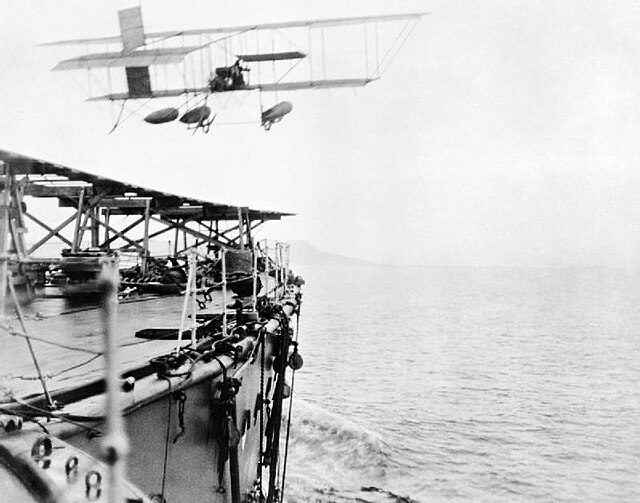The Royal Flying Corps (RFC) was the air arm of the British Army before and during the First World War until it merged with the Royal Naval Air Service on 1 April 1918 to form the Royal Air Force. During the early part of the war, the RFC supported the British Army by artillery co-operation and photographic reconnaissance. This work gradually led RFC pilots into aerial battles with German pilots and later in the war included the strafing of enemy infantry and emplacements, the bombing of German military airfields and later the strategic bombing of German industrial and transport facilities.
Royal Flying Corps
Royal Flying Corps Sweetheart Brooch
Sopwith Camel
RFC Bleriot XI monoplanes at Netheravon, 1914
The Royal Naval Air Service (RNAS) was the air arm of the Royal Navy, under the direction of the Admiralty's Air Department, and existed formally from 1 July 1914 to 1 April 1918, when it was merged with the British Army's Royal Flying Corps to form the Royal Air Force (RAF), the world's first independent air force.
Personnel of No 1 Squadron RNAS in late 1914
Commander C. Samson of the RNAS takes off from HMS Hibernia in his modified Shorts S.38 “hydro-aeroplane” to be the first pilot to take off from a ship underway at sea - 9 May 1912.
Sopwith Triplanes from No. 1 (Naval) Squadron, in Bailleul, France. The aircraft nearest the camera (N5454) was primarily flown by ace Richard Minifie.
RNAS officer dropping a bomb from a SSZ class airship during the First World War.








